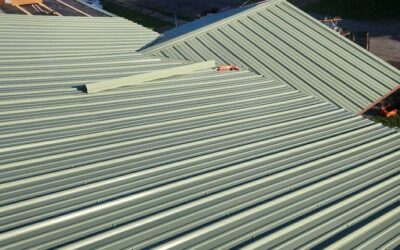Roofing Terms and Definitions: Roofing Terminology You Need to Know
Understanding roofing terminology is essential whether you’re a homeowner planning a roof replacement or a contractor explaining details to clients. Below is a comprehensive list of roofing terms and definitions to help you better understand everything on a roof and the exterior of a house.
Parts of a Roof
1. Roof Structure
- Decking (Sheathing): The foundation layer of the roof, typically made of plywood or OSB, where shingles and other roofing materials are installed.
- Rafters: Sloped wooden beams that support the roof deck.
- Trusses: Pre-engineered wooden or metal framework that provides structural support for the roof.
- Ridge: The highest horizontal point where two roof planes meet.
- Valley: The internal angle where two roof slopes meet, directing water flow.
- Hip: The external angle where two roof slopes meet.
2. Roofing Materials
- Shingles: The outermost roofing layer, typically made from asphalt, metal, wood, slate, or tile.
- Underlayment: A waterproof barrier placed under shingles to provide additional protection.
- Ice and Water Shield: A waterproof membrane installed in vulnerable areas to prevent water infiltration.
- Flashing: Thin metal pieces used to seal roof penetrations and edges to prevent leaks.
- Drip Edge: A metal strip along the roof’s edge that directs water away from the fascia and into gutters.
3. Roof Components
- Gutters: Channels along the roof edge that collect and direct rainwater away from the foundation.
- Downspouts: Vertical pipes that carry water from gutters to the ground.
- Soffit: The underside of the roof overhang, often ventilated to allow attic airflow.
- Fascia: The vertical board along the roof’s edge where gutters are attached.
- Eaves: The edges of the roof that extend beyond the walls of the house.
- Dormer: A structure that protrudes from the roof with a window, often for additional attic space or light.
- Chimney: A vertical structure that allows smoke and gases from a fireplace to exit the home.
- Vent Pipe: A pipe that releases heat and moisture from plumbing systems and appliances.
- Skylight: A window installed on the roof to bring natural light inside.
Types of Roofs
- Gable Roof: A classic, triangular-shaped roof with two sloping sides.
- Hip Roof: A roof with slopes on all four sides, meeting at a ridge.
- Mansard Roof: A roof with four steep slopes, often used in French architectural styles.
- Flat Roof: A nearly level roof with a slight slope for drainage.
- Gambrel Roof: A two-sided roof with two slopes on each side, often seen in barns.
Common Roofing Issues
- Roof Leaks: Water infiltration due to damaged shingles, flashing, or underlayment.
- Ice Dams: Ice buildup at the roof’s edge that prevents proper drainage, leading to leaks.
- Blistering: Bubbles forming under shingles due to trapped moisture or poor ventilation.
- Curling: Shingles bending upward or downward due to aging or moisture damage.
- Granule Loss: Shedding of protective granules from shingles, reducing durability.
Conclusion
Understanding roofing terminology helps homeowners make informed decisions about maintenance and replacements. Whether you’re evaluating an estimate or discussing repairs, knowing these terms ensures clarity and confidence in your roofing project.
For expert roofing services in Youngstown, Ohio, contact S&K Construction and Remodeling LLC. As an Owens Corning Preferred Contractor, we provide quality roofing solutions to protect your home.
 (440) 307-2060
(440) 307-2060


